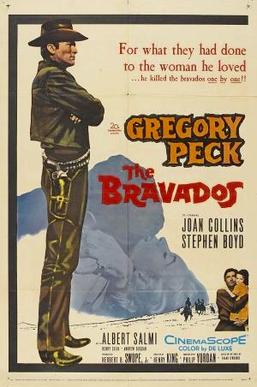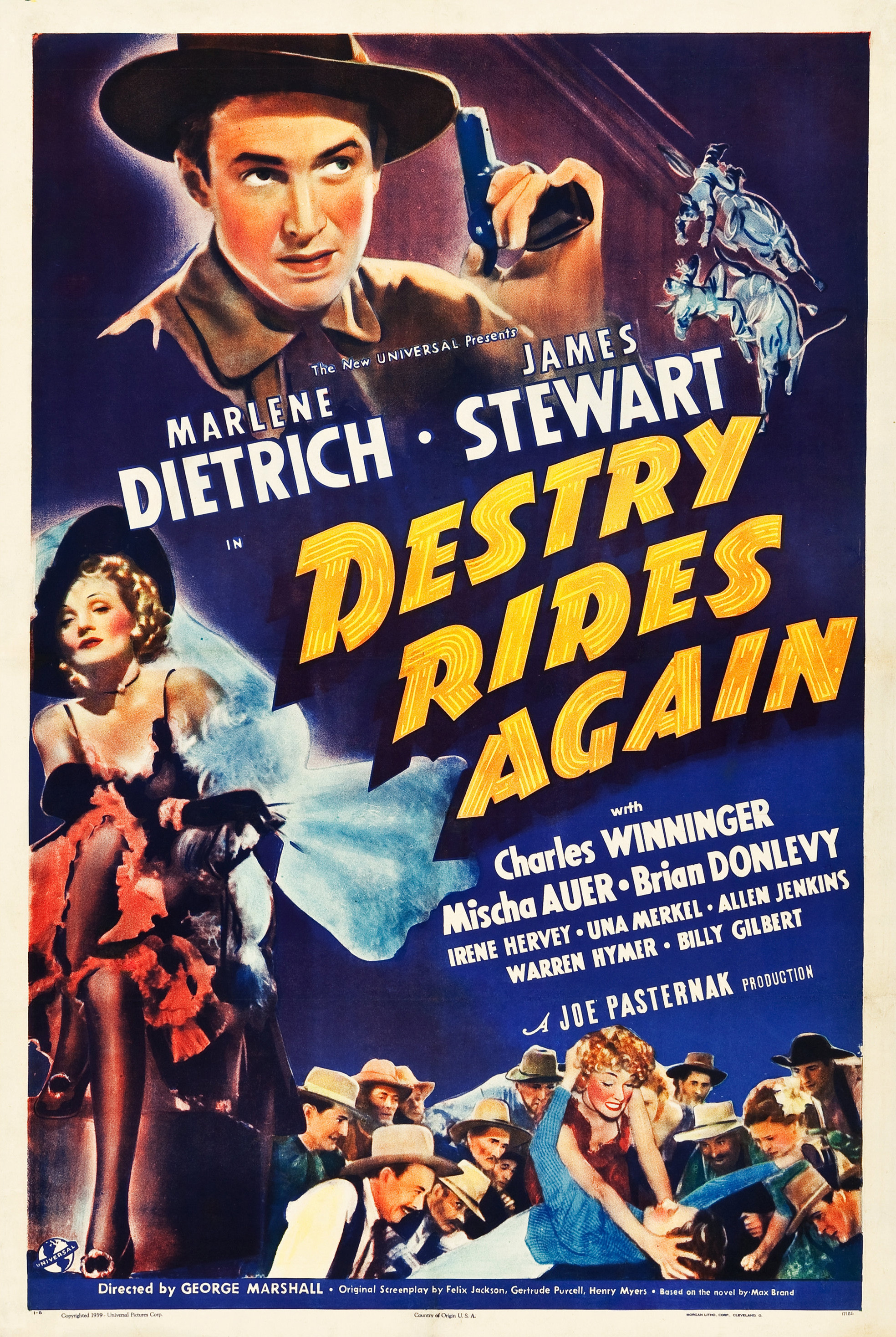In the history of the West, gunmen and bandits played a leading role: lawless frontier towns or villages where law enforcement was inefficient were often the target of gangs of outlaws with the aspiration to get rich at the expense of banks, railways, stagecoaches or farms.
Western filmography has of course paid much attention to their stories, and was often inspired by events that actually happened. Mik has chosen ten masterpieces that brought us the most epic and timeless incarnations of the bandit: romantic hero, redeemed gunslinger, sometimes ruthless criminal, elsewhere allied to the law and protector of farms and villages in trouble.
MIK’S CHOICE OF WESTERN MOVIES: 10 best BANDITs stories
| Title | Director | Year |
|---|---|---|
| Jesse James | Henry King | 1939 |
| Pat Garrett and Billy the Kid | Sam Peckinpah | 1973 |
| When the Daltons Rode | George Marshall | 1940 |
| The Bravados | Henry King | 1958 |
| Destry Rides Again | George Marshall | 1939 |
| MacKenna’s Gold | Lee J. Thompson | 1969 |
| Shoot Out | Henry Hathaway | 1971 |
| The Tall T | Budd Boetticher | 1957 |
| Night Passage | James Neilson | 1957 |
| The Comancheros | Michael Curtiz | 1961 |
Jesse James by Henry King, 1939
With Tyrone Power, Henry Fonda, Randolph Scott; color, 106 min

Jesse and his brother Frank are forced to become bandits in order to avenge their mother, killed by mercenaries hired by the railway company with the purpose of forcing farmers away from their lands. The village hails Jesse a hero, and roots for him when he is betrayed by a friend after deciding to retire and leave town with his wife and son.
The real Jesse James was born in 1847 and was famous for his aim. After fighting in the Civil War together with his brother Frank, he began to rob banks and trains along with other bandits he recruited, including the famous Younger brothers. He was killed by a friend with the gun he had given him while he was at home unarmed.
Over twenty movies have been made about Jesse James, including The Return of Frank James by Fritz Lang and The True Story of Jesse James by Nicholas Ray. Brad Pitt also played Jesse James in the movie The Assassination of Jesse James by the Coward Robert Ford based on the Ron Hansen novel, with soundtrack by Nick Cave and Warren Ellis.
Pat Garrett and Billy the Kid by Sam Peckinpah, 1973
With James Coburn, Kris Kristofferson, Bob Dylan; color, 106 min

Pat Garrett and Billy The Kid, gunmen and good friends, are hired by land owner Chisum to defeat his rivals. When Pat Garrett accepts the sheriff’s badge offered to him by the colonists of New Mexico and by Chisum, he also agrees to eliminate his friend. Based on a true story; Bob Dylan had a small part in the film and his are the music and the soundtrack, which includes the epic ballad Knocking on the Heaven’s Door.
As a consequence of many disagreements between Metro Goldwyn Meyer and director Sam Peckinpah, the movie was taken over by the production company and heavily re-edited, deviating from the director’s vision. Peckinpah’s original version was re-released in 1988, and the movie was finally shown as the masterpiece it was intended to be.
When the Daltons Rode by George Marshall, 1940
With Randolph Scott, Kay Francis, Dorothy Granger; b&w, 81 min

Young lawyer Tod Jackson goes to Kansas to visit the Dalton brothers and discovers that they are about to lose their farm to the landowners, who are determined to drive them out of their land at any cost. When the brothers organize a gang and ask for his help, Tod finds himself having to choose between his respect for the law and his friendship with the Daltons.
The film is based on the novel When the Daltons Rode by Emmett Dalton (one of the two brothers) and Jack Jungmeyer. In real history, the Daltons were actually fifteen brothers, dominated by their strict mother who feared they would become outlaws like the Younger cousins.
The history of the Daltons inspired Belgian cartoonist Morris to create his Lucky Luke comic series in 1946, which in turn inspired several films and an Italian television series starring Terence Hill.
The Bravados by Henry King, 1958
With Gregory Peck, Joan Collins, Stephen Boyd; color, 98 min

When four bandits escape from prison, rancher Jim Douglas chases them, certain they’re responsible of raping and killing his wife. Taken from the eponymous book by Frank O’Rourke, the film tells a story of revenge pushed to the verge of obsession.
Gregory Peck confirmed it to be an allegory of McCarthyism, which he opposed. During filming, Peck decided to actually become a cowboy in real life, and bought a vast ranch with over 600 heads of cattle near Santa Barbara, California.
Destry Rides Again by George Marshall, 1939
With James Stewart, Marlene Dietrich, Mischa Auer; b&w, 94 min

With the complicity of the mayor, a band of swindlers and murderers dominates the village, to the point of killing the sheriff and electing a drunkard to replace him. The latter, however, appoints the son of a famous gunslinger as his deputy, hoping he’ll be as good as his father.
The film is taken from the novel of the same name by Max Brand, released in 1930 and already filmed once in 1932. Considered as “the most beautiful comic Western ever” by Iranian director Ehsan Khoshbakht, the movie effortlessly alternates between drama and comedy.
Unforgettable is the dramatic entrance of Dietrich, who sings Little Joe the Wrangler along with two other songs included in the soundtrack of the film.
MacKenna’s Gold by Lee J. Thompson, 1969
With Gregory Peck, Omar Sharif, Telly Savalas; color, 128 min

A group of criminals kidnap Sheriff Mackenna because, having seen the map in the possession of an old Apache, he is the only one who knows where the Gold Valley is.
The film is based on the novel by Will Henry and set almost entirely in exteriors in Arizona, with exciting aerial shots of the canyons in beautiful Monument Valley. Soundtrack by José Feliciano.
Shoot Out by Henry Hathaway, 1971
With Gregory Peck, Pat Quinn, John Davis Chandler; color, 95 min

After serving a seven-year sentence for a bank robbery, Clay Lomax comes out of prison with the only thought of taking revenge on his accomplice who, shooting him from behind, had him captured. Imagining Clay’s resentment, former accomplice Sam Foley hires three killers to kill him.
From the novel The lone cowboy by Will James. Fun fact: the village where the action takes place was rebuilt in New Mexico as it was in the times of the Old West, but was then completely dismantled. The movie score was composed by Dave Grusin, jazz pianist and author of over one hundred soundtracks.
The Tall T by Budd Boetticher, 1957
With Randolph Scott, Maureen O’Sullivan, Richard Boone; color, 78 min

After losing his horse in a bet, Pat Brennan is forced to travel to his friend Frank by stagecoach. However, the stage is assailed by three ruthless bandits and Brennan must do everything possible to eliminate them, for his safety and that of the other passengers.
Based on the story The captive by Elmore Leonard, the film is not considered fully part of the western genre due to its strong focus on dialogues and the psychological analysis of the characters.
A classic among the shortest, it boasts an evocative photography and an excellent cast.
Night Passage by James Neilson, 1957
With James Stewart, Audie Murphy, Dianne Foster; color, 91 min

After having suffered the third assault on the train carrying the workers’ salaries, railway officials rely on Grant McLaine to thwart a further robbery attack they know to be imminent. Among the bandits there is also McLaine’s brother, Utica Kid, the most dangerous of the band; McLaine tries to redeem him and get him to help.
Based on a novel by Norman A. Fox, the film was initially to be directed by Anthony Mann, who declined; he was then replaced by James Neilson, famous director of TV series such as Bonanza, Zorro, Ironside and Alfred Hitchcock Presents.
The Comancheros by Michael Curtiz, 1961
With John Wayne, Lee Marvin, Bruce Cabot; color, 105 min

Paul Regret, wanted for killing the son of a judge in a duel, is captured by ranger Jake Cutter. The two sono find themselves having to fight against the Comancheros, a group of outlaws selling weapons and whiskey to the Indians. Paul Regret has an opportunity to escape, but he regrets it and heads back to the ranger.
In the real West as in the movie, the Comancheros were gangs of weapon traffickers who did business in particular with the Comanche Indians, hence the name. This behavior was considered unacceptable during the war with the Indians, and the American army tried in every way to stop their trade.


